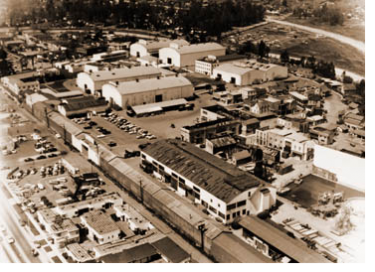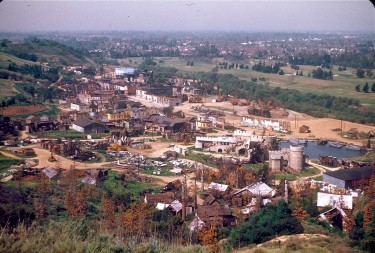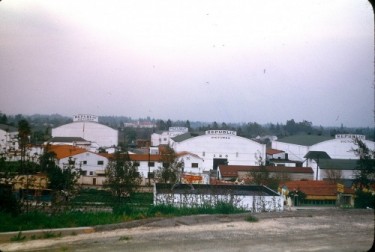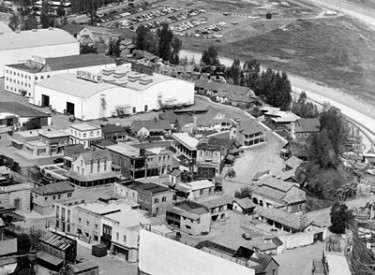Just two of the ‘Dream Factories’ in the hey day of Cinema – they helped transport us to worlds that we could only imagine – into a fantasy land – at least for a short time – where we could live out the dramas and romances that we saw on the huge silver screen. As young kids we would sit there watching – wide eyed at the sights we saw. That may sound a little ‘over the top’ but I don’t think it was because this era preceded the days of far off travel – so any films on, say, the old west or a tarzan film for example in the jungle, we would see these foreign lands that we had only seen before in photographs. Even if you had a TV set in those days it was so small and what we could watch, although very good – was limited. Here in the cinema however we could see things that were larger than life. When TV did get a hold the cinemas hit back with Wide Screen, Technicolor epics that were way beyond the capability of television – and still are to this day.
I have come across these two terrific photographs taken in 1947 of UNIVERSAL STUDIOS
and REPUBLIC PICTURES Studios – below
Above and Below – Pictures of Republic Studios, Hollywood.

Above – Republic Studios in 1957
Republic Pictures was a film production and distribution company, but it also had studio facilities. It was active from 1935 until 1959 specialising in B movies, serials, westerns and jungle adventures such as the Bomba The Jungle Boy series done by Monogram Pictures which made up one of the component parts of Republic.
The studio helped with the financing and distribution of several of the films of John Fords during the 1940s and early 1950s.
They also had a hand in the development of the early careers of cowboy stars John Wayne, Gene Autry and Roy Rogers
http://www.youtube.com/watch?feature=player_detailpage&v=uU_59vEqnAc
Mongram Pictures
In the 40s Monogram made such great features with stars like Charlie Chan and the Bowery Boys – both of which became very popular in a series of films – mainly supporting films though.
They didn’t turn their back on westerns either because they had cowboy stars such as Tim McCoy and Tex Ritter and later on they signed Johnny Mack Brown when the other major studios decided to move away from westerns and this allowed Mongram to maintain a production level of between 30 to 40 films per year in the 40s which in present terms would really be some going.
Prior to the fifties era the studio signed Boris Karloff to do six films and also Bela Lugosi who by that time had probably seen the best of his interesting career.
There were also – later – camp horror classics such as “House on Haunted Hill” with Vincent Price – filmed in Emergo – something I actually saw for myself when a skeleton appeared to come out of the screen – it was actually done by the local cinema manager who was operating a sort of pulley arrangement which had the skeleton coming out into the audience on overhead wires. The emerging skeleton then with luck linked in with the screen action.
Here is a Link to see Emergo in action at a cinema in Detroit apparently – see what you think –
http://www.youtube.com/watch?feature=player_detailpage&v=nBNtbQXEtCg
Among much bigger productions John Ford shot “Hurricane” there in 1937. Other notable films included “Kidnapped! ” (1949 with Roddy McDowell.)
_02-crop.jpg) Jon Hall in The Hurricane
Jon Hall in The Hurricane
The Hurricane was a really big film in terms of a spectacular climax – and one that was at the time very well done.
 Roddy McDowell in Kidnapped
Roddy McDowell in Kidnapped
I don’t think I have ever seen the above version of Kidnapped out of the many there have been. Later we had the Disney version with Peter Finch which was a good one, and well after this Michael Caine played that same role although my own view is that he was mis-cast. One thing about it though was that the scenery in the Scottish Highlands looked superb in Technicolor on the big screen.
I realise that in the case of Republic Studios then they were probably seen as being at their best throughout the 40s but neverthles they did go through until the end of the 50s – so we can quite justifiably include this item.



Place your comment